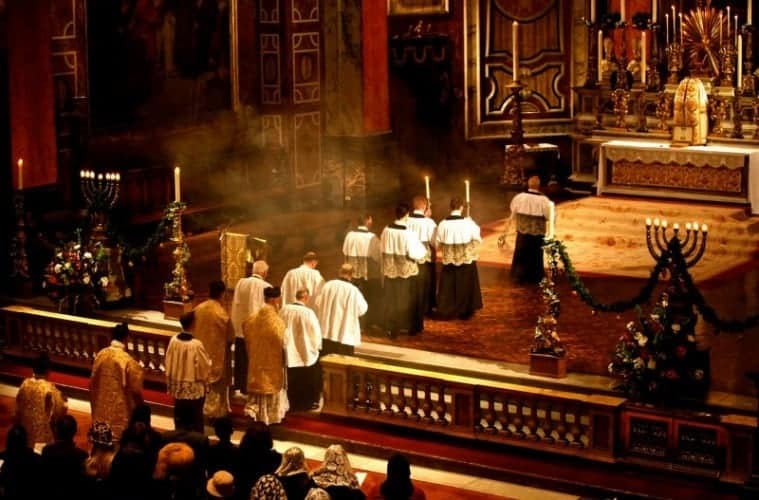Saint Thomas Aquinas answers those today who call into question the splendor of the traditional liturgy. What far too many dismiss as superfluous and showy, the Angelic Doctor rightly sees as uplifting and beautiful.
The chief purpose of the whole external worship is that man may give worship to God. Now man’s tendency is to reverence less those things which are common, and indistinct from other things; whereas he admires and reveres those things which are distinct from others in some point of excellence. Hence too it is customary among men for kings and princes, who ought to be reverenced by their subjects, to be clothed in more precious garments, and to possess vaster and more beautiful abodes. And for this reason it behooved special times, a special abode, special vessels, and special ministers to be appointed for the divine worship, so that thereby the soul of man might be brought to greater reverence for God. (Summa theologiae I-II, q. 102, a. 4)
It’s not a stretch to say that a big part of the problem for the past forty years has been a push to make the Church more “common” in an attempt to “reach out” and to become popular and liked, according to the terms of an insecure culture. Here in Milwaukee, this phenomenon took hold in a singularly troubling way. In the process, Catholic liturgy, once full of mystery and splendor, fell victim to the banality of the times. Clerical narcissism infected the liturgy, and the Mass became more and more about the priest and his chummy “act” than about the Sacrifice.
Of course, the Church’s rich liturgical traditions live on in small yet growing pockets of authentic Catholic culture. (Thank you, Saint Stanislaus Oratory and the homeschooling movement.) More Catholics, growing tired of the stale culture of liturgical mediocrity at their parishes with Father Personality, are seeking out the ineffable and the beautiful so that their souls “might be brought to greater reverence for God.”



